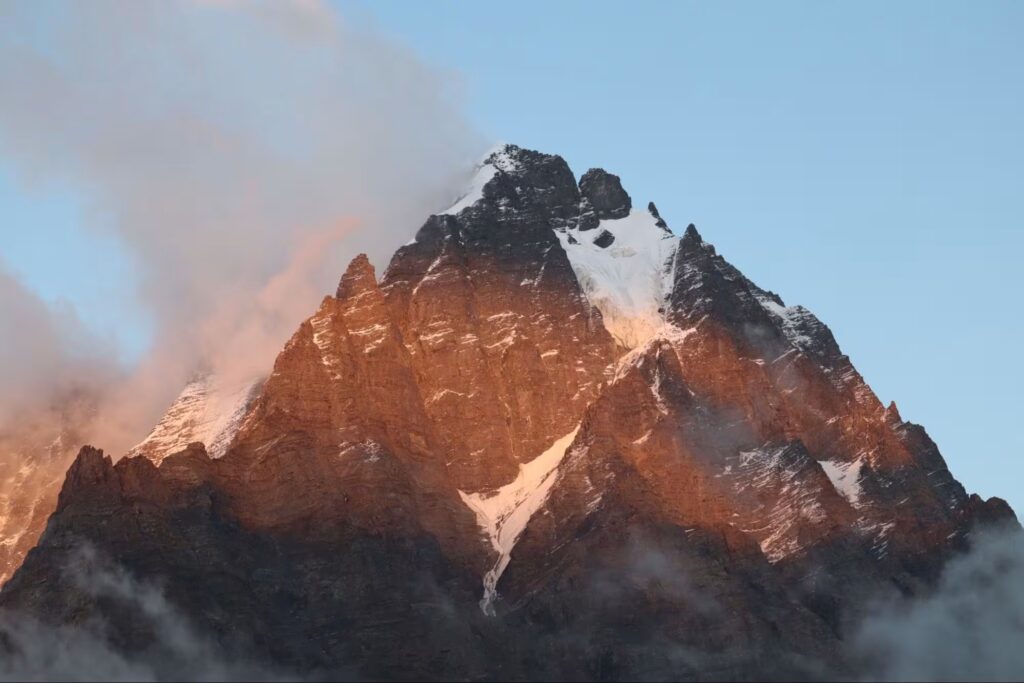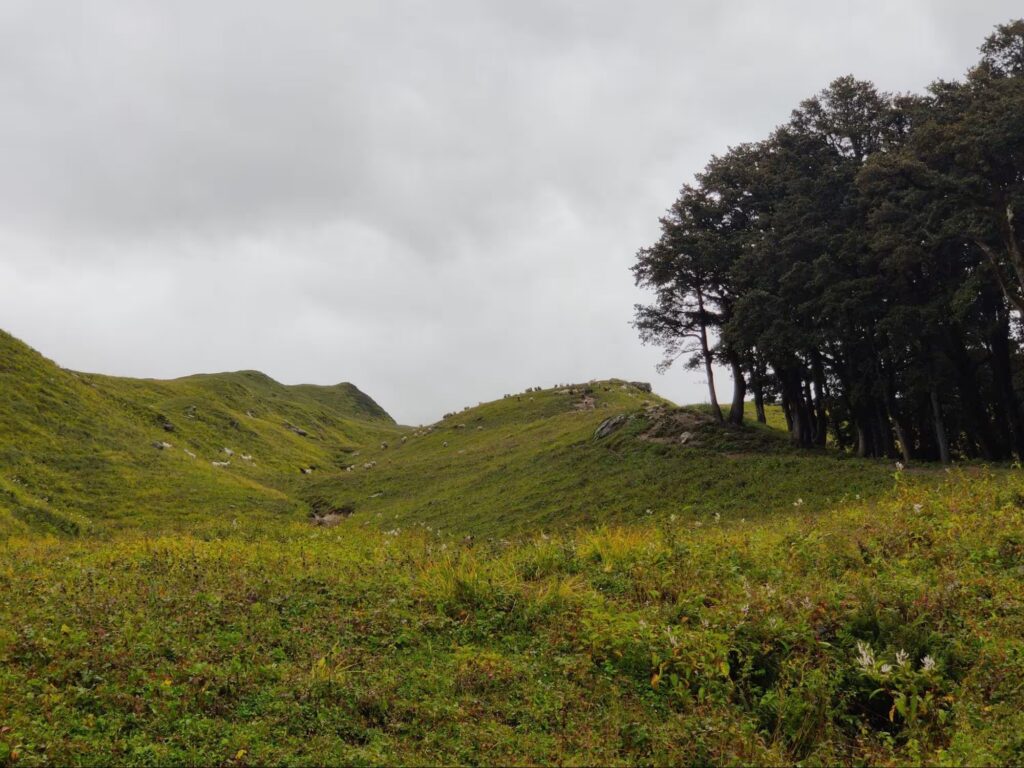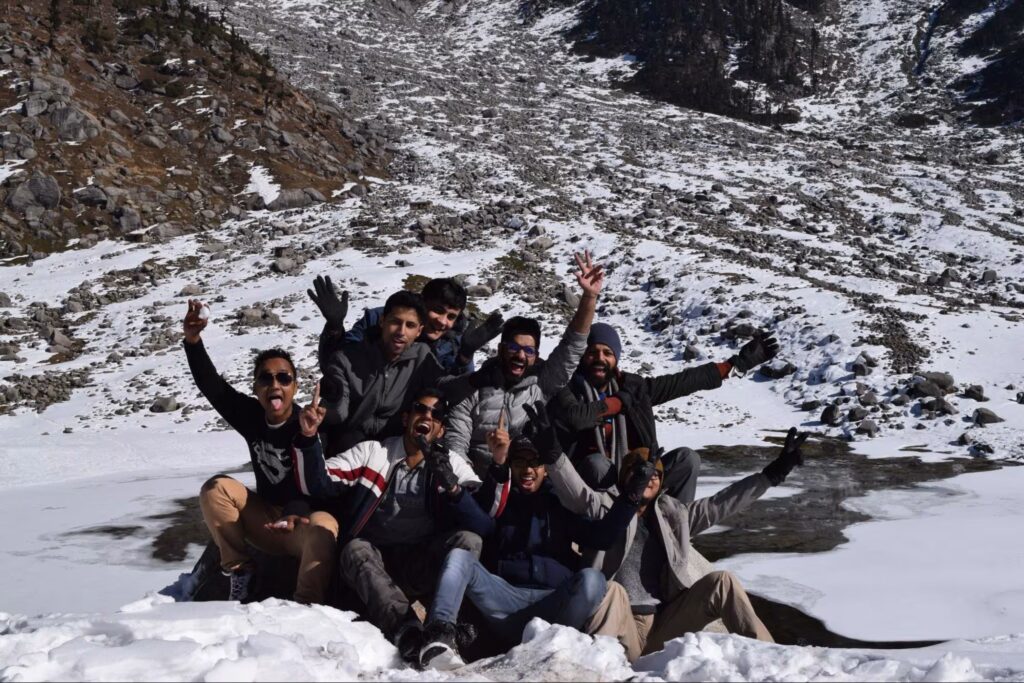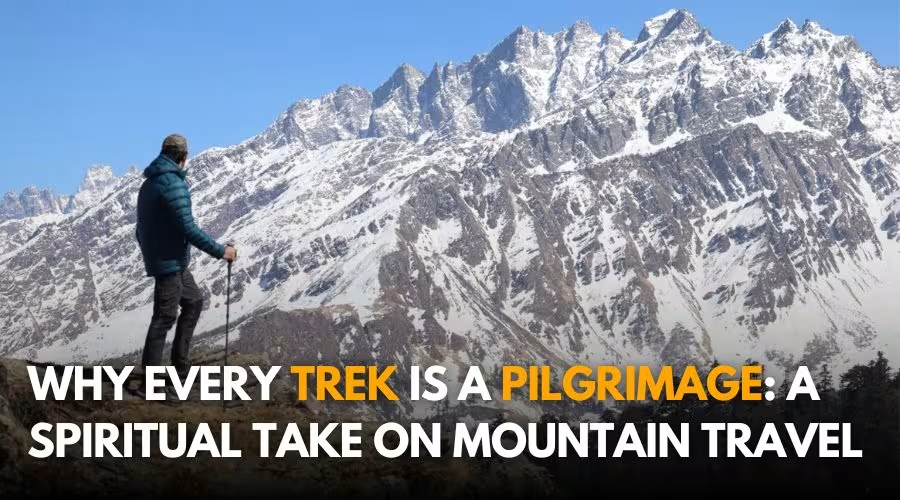India has always been famous as the country of deities and gods. The majority population of this country are Hindus and Hinduism is largely considered to be the oldest religion in the world. Anyone growing up as a kid in India must have surely heard of religious pilgrimages like Mata Vaishno Devi, Kedarnath and many more such destinations. Have you ever considered why certain places are considered sacred according to Hinduism?
There are 33 kotis of Devis and Devtas in Hinduism and the major gods which are worshipped are Lord Shiva, Lord Vishnu and Lord Brahma. The rivers, hills and mountains are considered sacred in our country because these are also linked to these deities in some manner. When it comes to our Himalayan Range, our major two states, Himachal Pradesh and Uttarakhand are called Devbhoomis.
These sacred places have certain mythologies related to them and the followers visit these tirthas as a way to purify the mind and soul and gain spiritual benefits. The ideology of these places being far from commercialisation is because it is believed that when a person goes through hardships and struggles and lets go of his ego, then only he can find solitude and awakening. These sites are far away from connectivity and there are very limited resources to survive. One has to trek several kilometers, sleep in tents, eat basic food and then, if the luck permits, he gets to worship the deity’s idol.

If we step aside from religious pilgrimages, there are many other sacred places in the Himalayas where there are no establishments by humans. Some of these examples are Har Ki Dun, Kedarkantha, Chandrashila, Gaumukh, etc. These places have mythologies based in them from the beginning of humanity,y and many trekkers explore these regions just to feel the spiritual experience.
In my personal opinion, every trek offers a spiritual experience. People often confuse between spirituality and religion. Spirituality is a personal journey of exploration, often focused on finding meaning and purpose in life through inner reflection and connection with something larger than oneself. Religion, on the other hand, is a structured system of beliefs and practices, typically shared within a community or group, and often involving worship of a deity or deities.
Trekking is one of the most spiritual activities in the outdoors because it contains all the aspects of life. From meeting new strangers to surviving in the outdoors with minimum resources and witnessing the beauty of nature truly transforms people to their absolute inner self.

Studies have shown that green colour is associated with calming and relaxing effects on the nervous system. Walking on the green meadows and jungles induce the feeling of harmony and calm in the mind of the trekkers. Walking in this sacred land provides a great opportunity for a deeper connection with oneself and the natural world. Trekking is often done in groups and most of the time, these people are strangers.
When you trek together as a team, this results in close bonding of the teammates. The trekkers walk together, eat together, and even sleep together. In this brief period of trekking days, the trekkers share some of the best moments of their lives together. They laugh, bond together at bonfires, share their experiences and become listeners to each other’s rants. It is often seen that post the trek, the trekkers often get to know the sleep and even the pooping cycles of their teammates!

Meeting new people and sharing vulnerable moments of a trek make them your permanent friends for life. It makes us realise that the people around in the cities are just like us and we can be safe around them. When they come out in their raw forms in natural settings, it leads to a very beautiful introspection. The other people which you encounter on the mountains are the kitchen team, the porters and the shepherds.
Passing through various himalayan villages, you see the slow life of the locals and the hardships they go through. That realization of taking things for granted stays with you for a long time and you start to respect these people more. It fills you with gratitude and you become more appreciative towards everything. When you see the life of shepherds and their living conditions, it changes you from within. They dont have yearly goals to achieve or targets to complete. They just roam around with their flock with that big smile and they will always have enough food to offer you.
Beyond its physical beauty, the Himalayas hold deep spiritual significance and have been a sanctuary for spiritual seekers for centuries. The serene and tranquil environment of the Himalayas provides a perfect setting for introspection, meditation, and spiritual rejuvenation. The silence, solitude, and breathtaking landscapes create the perfect atmosphere for contemplation and reflection. One is able to connect with nature and delve into their inner self.
Trekking in the Himalayas also requires a deep level of mindfulness and presence. Each step in the journey becomes an opportunity to be fully present in the moment, observing the surroundings, and appreciating the beauty around you. This mindful awareness can cultivate a sense of gratitude, inner peace, and spiritual connectedness.
The Himalayas are home to numerous ancient monasteries, temples, hermitages and spiritual places that hold deep religious and cultural significance. This revered land is dotted with pilgrimage spots and countless sites that have attracted believers from all around. These sacred places offer a glimpse into the rich spiritual and religious heritage of the region.
On a trek in the Himalayas, you may have the opportunity to visit some of these sacred locales steeped in ancient myths, folklore and religious legends. Whether meditating in serene mountain settings, visiting ancient monasteries, traveling to sacred lakes and holy places , the Himalayas offer a transformative journey for spiritual exploration.
For some people, hiking can also be a way to connect with the divine or with a higher power. Whether you’re a religious person or not, being in nature can help you feel more connected to something greater than yourself. Some hikers report feeling a sense of awe or wonder when they look out at a beautiful vista or watch the sunrise over the mountains. This can be a powerful reminder of the beauty and majesty of the world, and it can help you feel more connected to your spirituality.

Hiking as a spiritual experience not only provides opportunities for connection with nature but also offers mental health benefits. By disconnecting from modern life, practicing mindfulness, embracing challenges, and feeling connected to something greater, hiking can contribute to reduced stress, improved mood, enhanced resilience, and a deeper sense of purpose and well-being.
Hiking can also be a great way to practice mindfulness, which is a key element of many spiritual practices. When you’re hiking, you’re fully present in the moment, focusing on each step and each breath. This can help you stay grounded and centered, and it can also help you develop a deeper appreciation for the beauty of the world around you.
In addition to these benefits, hiking can also provide a sense of accomplishment and challenge, which can be spiritually rewarding. When you push yourself to climb a steep hill or conquer a difficult trail, you’re building resilience and strength, both physically and mentally. This can help you feel more confident in your abilities and more connected to your sense of purpose and mission. So it is my humble suggestion to everyone to trek at least once in their life. It is life changing!

Leave a Comment